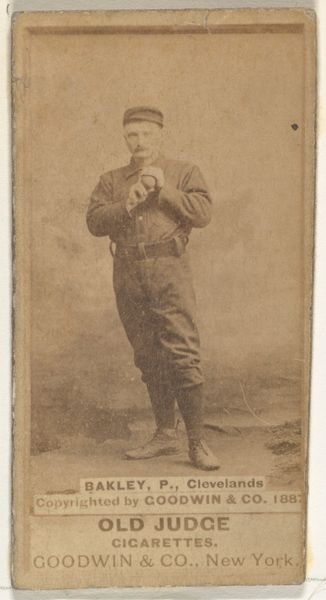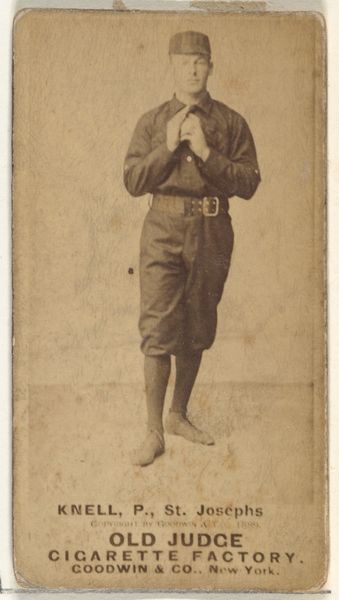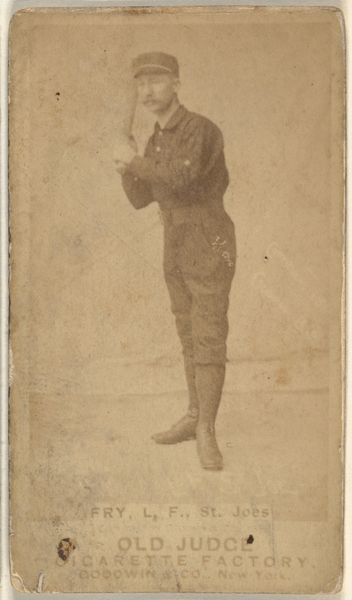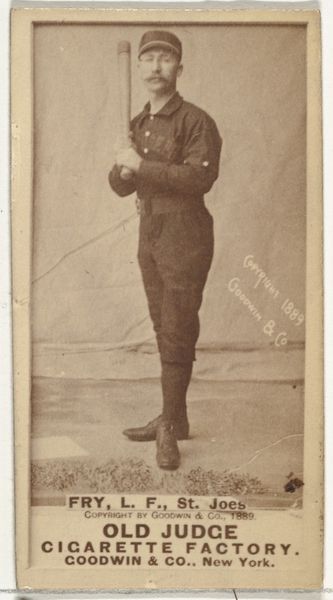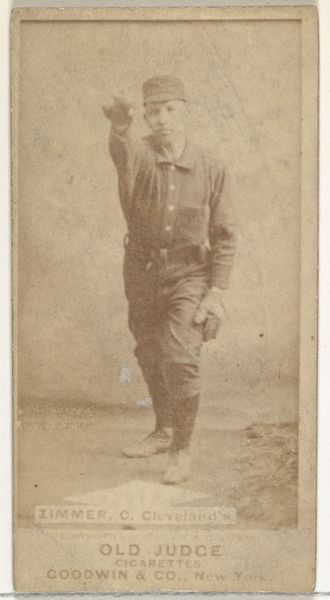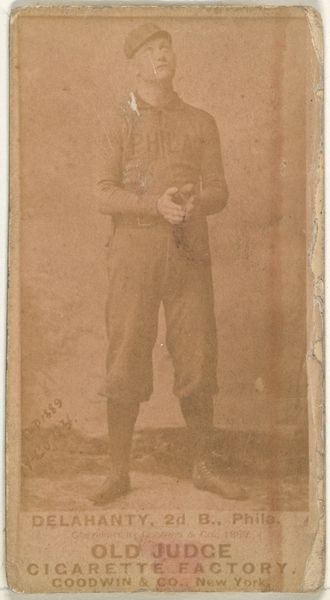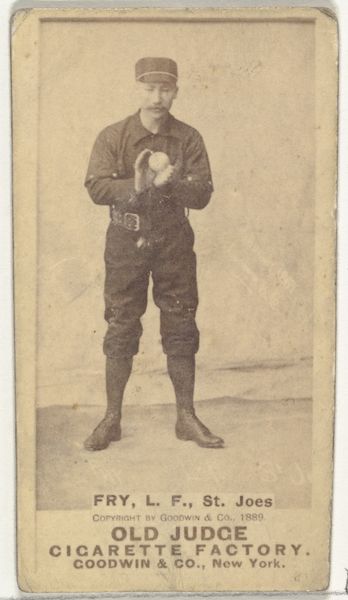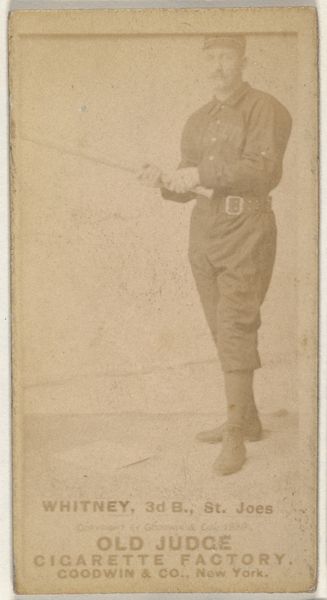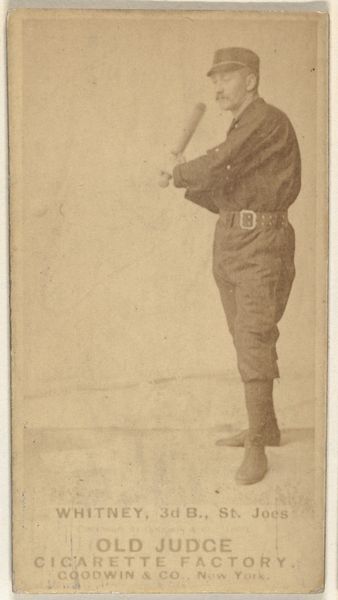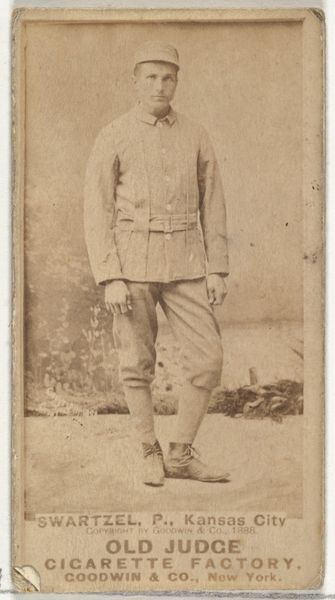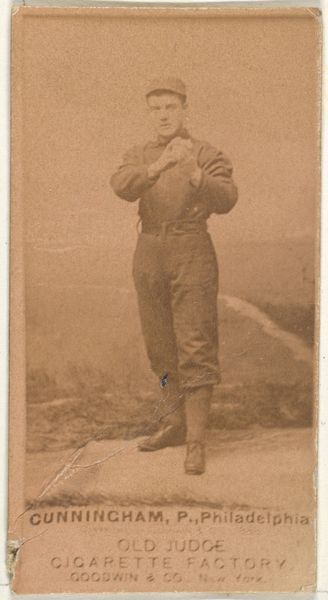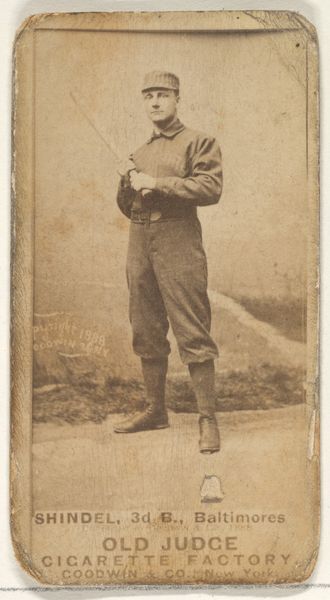
Charles F. Whitney, 3rd Base, St. Joseph Clay Eaters, from the Old Judge series (N172) for Old Judge Cigarettes 1889
0:00
0:00
drawing, print, photography
#
portrait
#
drawing
# print
#
impressionism
#
baseball
#
photography
#
historical photography
#
men
#
genre-painting
Dimensions: sheet: 2 11/16 x 1 3/8 in. (6.9 x 3.5 cm)
Copyright: Public Domain
Curator: This is a photograph entitled "Charles F. Whitney, 3rd Base, St. Joseph Clay Eaters" taken around 1889, as part of the "Old Judge" series, and created by Goodwin & Company as promotional material for their Old Judge Cigarettes. Editor: It has this sepia tone that immediately pulls you into that time, like looking into a well. He seems very formal, considering he's an athlete—almost staged, like a mannequin. Curator: Well, remember the context. Photography was still a developing art form, and this image existed not just as a depiction of an athlete but as part of a larger promotional campaign tied to the rise of mass media and advertising. Editor: Still, it speaks to a particular construction of masculinity, doesn’t it? There he stands, an athlete commodified to sell cigarettes, performing respectability while simultaneously endorsing a product known to damage health. Curator: Precisely! His pose, clothing, and even the formal title on the card all serve to frame him within a specific social and economic structure, the late 19th-century boom era of professional baseball. It’s the beginning of celebrity endorsement. Editor: I wonder about his own agency in all this. How did athletes perceive their role in this emerging advertising landscape? Did he see himself as complicit, or as simply seizing an opportunity within a system largely outside of his control? Curator: Those questions lead us down the complex paths of labor history and the construction of fame. The cards themselves democratized images in a sense, while simultaneously embedding individuals like Whitney into circuits of commerce. Editor: The image evokes an interesting interplay between athleticism, commerce, and constructed identity. What he represents goes far beyond his skill on the baseball field. Curator: Absolutely. Understanding these images as social documents is vital to understanding that the images served commercial functions. Editor: This deepens the image, reminding us how much more meaning it holds and to read every element with greater purpose.
Comments
No comments
Be the first to comment and join the conversation on the ultimate creative platform.
